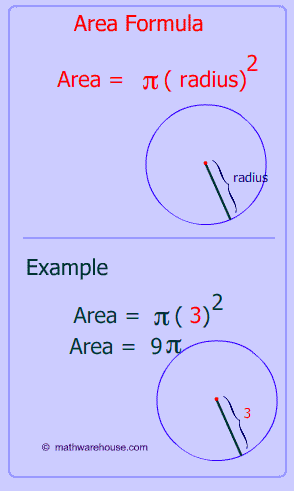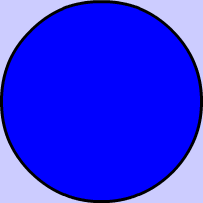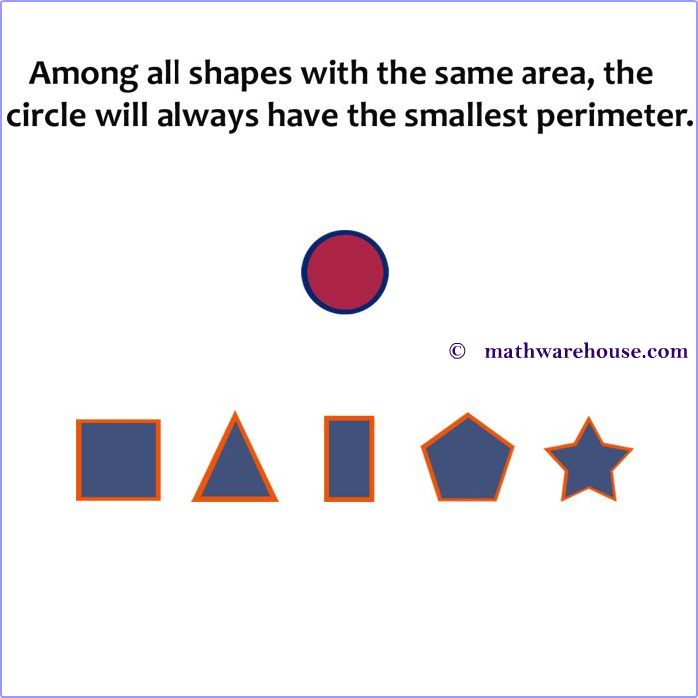Formula for Area of circle
The formula to find a circle's area $$ \pi $$ (radius)2 usually expressed as $$ \pi \cdot r^2 $$ where r is the radius of a circle.

Area of Circle Concept

The area of a circle is all the space inside a circle's circumference. In diagram 1, the area of the circle is indicated by the blue color.
The area is not actually part of the circle. Remember a circle is just a locus of points. The area is enclosed inside that locus of points.
















